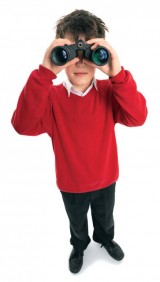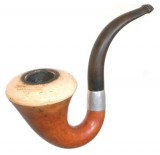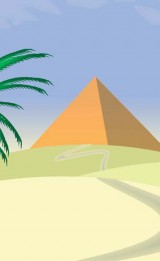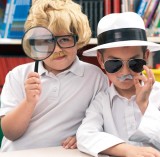Children don their deerstalkers to investigate a series of mysterious happenings at Dave Lewis' school...
With this year’s SATs safely out of the way, we decided to embark on a whole school project to reinvigorate the children. Our chosen theme was ‘detective work’, due in part to Sir Arthur Conan Doyle being a local celebrity in Portsmouth, but also because it’s a creative way to improve pupils’ thinking skills.
We developed at least one activity for each year group, and to help pupils get into the spirit of things they were encouraged to come to school dressed as detectives. (As evidenced by our lost property box, which is still full of assorted deerstalkers.)
The project lasted for two weeks, during which time the children found themselves involved in all sorts of mysterious goings-on – a few of which I’ve written about here in case you’d like to try something similar at your school.
 Learn the skills of a super sleuth…
Learn the skills of a super sleuth…
Going undercover
As a detective sometimes you need to go unnoticed. With your class, design and make disguises so that you won’t be recognised while trailing suspects. False moustaches, wigs, glasses, hats and big coats will all help children blend into a crowd. Why not test out your new disguises by putting them on and asking another class to guess who’s who?
Remote observation
Sometimes it’s best not to get too close to the action, so this time we’ll observe from a distance. Set up a baby monitor in another classroom and ask that class or the teachers to discuss a plot. Have the class listening in on the receiver and then together work out who might have said what before ‘arresting’ them. You could also do this with a hidden camera or webcam.
Caught in the act
Ask the children to bring in any cheap pairs of binoculars they might have. Tell the class that something’s ‘going down’ at break time. Set up a ‘drop’ between two teachers and have the children observe what’s going on from a distance in their disguises. What did they see happening?
Can the childrenacome up with plausible explanations?
In the EYFS we wanted to develop the children’s powers of observation and their ability to make deductions based on visual evidence.
To prepare for the activity, we produced a PowerPoint that displayed rows of coloured bears arranged in different sequences on each slide. For example, three red bears were shown on the first slide. On the second, the combination changed to two red bears and one yellow bear.
Showing the PowerPoint to the class, we asked the children to describe how the sequence had changed and whether they could come up with a short story to explain what had happened, e.g. ‘The third red bear is wearing new yellow clothes’ or ‘The third red bear has gone out shopping and a yellow bear has come to say hello to the two red bears that are left.’
You can extend this by including a longer sequence, or by changing the position of more than one bear and asking the children to comment on what has been moved and to where? Again, see if they can come up with a possible explanation, e.g. ‘The yellow bear was naughty and got sent to the back of the line.’
 Use maths to solve a riddle…
Use maths to solve a riddle…
A treasure hunt was organised for Years 2 and 3 that required children to answer a maths problem at each point on the trail.
Instead of a map, we took photographs showing different areas of the school from unusual angles. The children were then given the first photo and asked to find the area in which it had been taken. Once at this location they would find the next picture and a maths problem that had to be solved before moving on.
We set up 10 picture clues around the school and the children needed the answers to all the maths problems in order to crack the riddle on the final clue.
As well as the detective work involved in discovering the different locations, this activity helped to develop pupils’ spacial awareness.
 Crack an Egyptian code…
Crack an Egyptian code…
Using Google Earth, show the children an overhead view of the pyramids in Giza. What do they notice about how they have been positioned? The pyramids look like they should have been built in a line, but one of them is off centre and they are different sizes. Why might this be?
Give the children hieroglyphics that represent the words Orion, Osiris, Milky Way and River Nile, and ask them to translate them. The hieroglyphics can be as simple or as decorative as you like – you can even carve them.
With a bit of research the children should find that the constellation of Orion was known to the ancient Egyptians as Osiris, and that the Milky Way is often referred to as ‘the celestial river’. Putting all this together they’ll discover that the pyramids were set out in the same way as the stars of Orion’s Belt, and have been positioned so that the Nile represents the Milky Way.
 Create a curious incident…
Create a curious incident…
Begin by setting up a scenario. We considered a mysterious letter or a recorded telephone call, but eventually decided to make the experience a lot more subtle by drawing strange designs on the walls and floors around school. We organised teams across the year groups to investigate the markings and modelled how to carry out inquiries along the lines of a real police investigation.
A parent who was previously a detective inspector came into school and talked to the children as if they were his officers, setting them tasks which included:
• Thinking about and deducing what the markings might mean; and identifying a pattern in where and when they had been discovered. Children were asked to predict what design might be found next and where they thought it might appear.
• How could they apprehend whatever or whoever was making the marks? Suggestions included setting up CCTV, or a web cam, to monitor suspected areas and organising stakeouts in rolling shifts.
• Deciding whether the markings were ‘real’ or a hoax. And, if the latter, who would they suspect? Close observation of the suspects followed. We threw in a few red herrings, but alibis later proved their innocence. Each group had to file a report on their findings and suggest what they thought was happening. These conclusions were presented in a class assembly, and afterwards all was revealed, Agatha Christie style.
For homework, we directed the children to http://www.unsolved-mysteries.com/unexplained_events and asked them to work on their own theories that would explain well known mysteries such as the Loch Ness Monster, The Marie Celeste and the Bermuda Triangle. Again, this enabled children to practise their thinking skills, come up with a hypothesis, and to find and present evidence to support their ideas.
Teaching five year olds to talk
Ace-Classroom-Support
Use coaching to turn failures into learning success
Ace-Classroom-Support
Easy ways to combat teacher stress
Ace-Heads
Kindness is contagious - give your colleagues a boost by recognising their efforts
Ace-Classroom-Support
